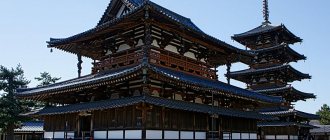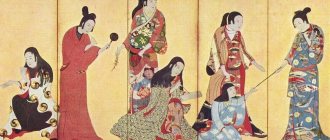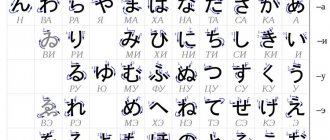The art of geisha is a whole science that girls should study throughout their lives. And such training began from early childhood. Most people assume that a geisha and a representative of the oldest profession in the world are one and the same. In fact, this opinion is wrong. Who are geishas? Photos of these girls show us fragile Japanese beauties with porcelain faces (though this is more a merit of the makeup artist than of nature). Below we will get acquainted with some of the features of this unusual profession. But in order to understand and, perhaps, unravel all the secrets of geishas, you need to know the history of their origin.
Who are geishas?
The literal translation of the word “geisha” is “person of art.” And this statement is not far from the truth. The fact is that a real geisha must be able to play musical instruments, sing, dance well, and also conduct a tea ceremony. But it's not that simple. A traditional ceremony includes many details that should not be forgotten. Well, of course, a geisha must have the art of seduction. At the same time, the level of skill must be so high that the man himself does not notice how fascinated he is with his companion. And of course, he should not suspect that the sweet girl is just doing her job. For a man, all feelings must be real.
There are no more geishas left
Geisha at the Matsuri festival in Tokyo.
Photo: Wilhelm Joys Andersen / Wikimedia Commons If you think that geisha have long disappeared into history, you are very mistaken: they exist in Japan to this day! They hold tea ceremonies and serve in traditional Japanese restaurants, and also work as musicians, comedians and toastmasters.
True, real geishas are rare today, and their numbers are declining. Modern-day geisha triumphs in closed, traditional world, World's oldest geisha looks to future to preserve past. So, if you find yourself in Japan, you will most likely have to take a selfie with a painted animator girl who has no idea about ancient oriental art.
What are geishas for?
Today it is known that a male actor was originally called a geisha. His main task was to entertain the public. Gradually, women began to enter this profession, and very soon they took this occupation away from the stronger sex. Today it is an exclusively female profession.
Who is a geisha in the modern world? Her main duty is to be the “hostess” or “manager” in the tea house where men gather. The geisha must arrange a tea ceremony for them in accordance with all the rules. In addition, she is obliged to entertain guests with songs, dances, and playing musical instruments. Thus, a geisha is invited primarily to diversify the leisure time of men. At the same time, we are not talking about intimate services. Thanks to her talents and ability to conduct conversations, a geisha can make a man want to return to the tea house again. And this is also her responsibility.
Daily routine of a geisha
The day begins early with hygiene procedures, taking care of the body and face. After all, according to the geisha code, she is always clean, tidy and smells good. Then there are classes. The acquired knowledge and skills must be maintained and developed.
play , perfectly . The skill of playing will disappear without daily rehearsals. The ability to play other musical instruments will increase your status in the eyes of guests.
BY THE WAY! The shamisen played by geishas is covered with cat skin, and the strings are tied with a gold plate. If you buy a simpler tool, this will reveal the difficult situation of the housewife, which is not desirable.
The movements of a geisha are brought to perfection . Skillful control of the body, seductive dancing, bowing, squatting and graceful movement requires maintaining physical fitness. And the weight of the kimono, multi-meter belt and necessary accessories also does not allow you to relax.
Once a week, be sure to visit the hairdresser. A hairstyle is being constructed there, which according to the rules cannot be touched until the next visit. Therefore, you have to sleep on a special varnished wooden stand.
It takes a lot of time (4-5 hours) to put on a kimono, tie the belt, apply whitewash and makeup. It is impossible to cope with this on your own. The clothes are dressed by students or older sisters. They do magic on the face, shoulders, and neck. The main thing is to observe moderation in everything and not to confuse anything. Do not accidentally cover up the clean area on the neck below the hairstyle. The complex knot of the belt covering the kimono is placed at the back. An obi tied casually in the front speaks of accessibility.
Work begins in the evening. A real geisha always collects information in advance about the profession, interests, and hobbies of the future guest. Then she skillfully uses the information in her work. Tea ceremonies and accompanying guests last until night. After such a busy day, a dream on a wooden stand will seem sweet.
Geisha. History of the profession
Throughout the existence of this profession, it was surrounded by many rumors and speculations. Therefore, now it is quite difficult to determine who became the first geisha and why such an idea came to the man’s mind. Let's turn to history for clarification. There is a legend about the reason for the appearance of the first geisha. It says that the founder of this profession was an adviser to the emperor. Since the ruler had a rather tough temper and a hot temper, the adviser often had to entertain him with songs, dances and intellectual conversations. Over time, this became known throughout Japan, and so-called taikomochi - artists - began to appear in the country. Their main duty was to entertain guests. Such services were most popular among samurai. But why were these artists representatives of the stronger sex? The fact is that women in those days were considered not smart enough to carry on a conversation with men. However, very soon the situation changed.
Often, along with male taikomochi, samurai invited courtesans, who were called “tayu”. However, men were increasingly in the spotlight, and they were left with nothing. That is why the courtesans decided to try themselves in this profession. This is how Japan first learned who a geisha was.
History of the profession
Historically, geisha appeared in Kyoto, Osaka and Tokyo in the 16th century. The first representatives of this profession were men who performed in the Kabuki theater, but later only girls became geishas. The connection between Kabuki actors and musicians and geishas can be traced in our time: very often geishas go to performances, and theater participants attend banquets. In addition, there is a tradition that requires actors to sign the traditional Japanese hair ornaments, kanzashi, worn by maikos.
The first female geisha was Kasen, who lived in the Ogiya house in Yoshiwara. Kasen initially worked as a prostitute with the goal of collecting enough money and paying off her debts to become free, and she eventually succeeded. Having gained freedom, she became a geisha in 1761. Previously, there were several varieties of this profession:
- Shiro-geisha - translated as “white geisha”, her job was only to entertain the guests.
- Korobi-geisha - translated as “tipping geisha”, in addition to her main duties, she could sell her body.
The official existence of the geisha profession began only in 1779, when a special office “kemban” was created, which established rules for them. For example, geishas in the red light district could not even sit close to guests and wear brightly colored kimonos, and it was also forbidden to insert kanzashi into the hair of Japanese geishas .
Geisha Rules of Conduct
As you know, the profession of geisha in Japan has official status. However, at first, when she first appeared, there were no strict rules controlling the behavior of such young ladies. Considering that the first geisha were Tayu courtesans, it would be easy to guess that they could spend the night with men for a certain fee, but only by mutual consent. However, already at the end of the 17th century, a special body was created - “Kemban”, the main function of which was to regulate the work of geishas and issue them registration. From this time on, girls who wanted to master an interesting profession were strictly prohibited from providing intimate services to clients. Men who know who geisha are will confirm that they are flirtatious and flirtatious. However, this is done only so that representatives of the stronger half of humanity feel relaxed and confident. However, a geisha knows exactly where to stop and will never allow herself to cross the line. The only exception could be the ceremony of choosing a patron - danna. A geisha could even give birth to a child for her patron. But that's how it used to be. Modern geisha no longer maintain this tradition.
A little history
Already at the age of 6, a girl from an impoverished family was sent to the house of a geisha (Okiya). There the grueling journey of learning this craft began. Only healthy, pretty girls with musical and other abilities were accepted. The family received money for them. In this way they sold or rented out their daughters.
The first thing they learned at school was their place in life. The girls did the dirtiest work in the house and served the elders. Exhausted, they managed to study:
- music;
- dancing;
- etiquette.
It was possible to withdraw from the okiya only by returning the money spent on training. The debt was repaid by relatives, the girl herself, or a patron. But they still did not return home. If funds allowed, they opened geisha schools or left the profession and got married.
Geisha schools
Geisha, of course, must learn their profession. Now this requires five years, although previously it took 25. Girls who wanted to learn this art were called maiko. The training took place in a tea house run by Oko-san. Translated, this word means “mother”. This is how the female trainees respectfully called their teacher. The owner of the tea house is obliged to bear all the costs of raising and training the girls. Their contents include the purchase of geisha clothing.
To perfect their art, maiko must work in small tea houses. For this they receive a nominal fee from the owner of their educational institution (the school is called okiya).
White-faced geishas are minors
0
Source:
When we try to imagine a geisha, we have a picture of a girl in a rich kimono and with jewelry in her hair, her face covered in white paint. In reality, the geisha didn't look quite like that. Geishas wore white face paint for special occasions, but overall they had a much more casual appearance that didn't stand out too much from other women wearing makeup. Girls who wore white face paint all day long. were maiko: minor, barely legal students who trained to become geisha. These young girls dressed as we imagine geishas today. The white face paint and jewelry they wore was actually a symbol of inexperience; The more experienced the geisha was, the simpler she was allowed to dress. By the time a geisha was among the best, she completely got rid of the white face paint. So, imagining the image of a geisha familiar to a European, we see before us a 13-year-old child.
Real geisha clothes
A geisha's clothes, like her makeup, are designed to highlight the girl's beauty and femininity. But in fact, a kimono cannot be called the most comfortable clothing in the world. His weight is about eight kilograms. In addition, the geisha's torso is additionally tightened with thick fabric, since in Japan a girl with small breasts is considered ideal. Even though this outfit is heavy and uncomfortable, the geisha's back should always be straight. To do this, a special board is placed under their belt.
Shoes deserve special attention. The gait of a real geisha should be mincing, so the sandals are designed in such a way as not to allow the foot to bend. In order to fully dress in her outfit, apply makeup and do her hair, a geisha needs about five hours and at least four assistants.
What does a geisha look like and what is different?
The appearance of a geisha attracts the eye. They have a sense of proportion in everything. Behavior, manners are restrained , wardrobe is elegant, makeup is modest. The look is refined , not flashy, and this attracts attention. An important accent is the small area of skin on the back of the neck that is not covered with white. This creates the illusion that the woman is wearing a mask that you really want to look under. Just as I want to look into her soul. But this woman knows how to keep her distance. She is always a mystery.
Shoulders, necks and faces covered with whitewash, eyes brightly lined with red, distinguish only young geishas. The older and more experienced they become, the more restrained their makeup is. At the moment of transition to the last stage, a ceremony takes place to change the red collar of the kimono to white. The style changes, a different hairstyle is done. Usually they start wearing a wig with expensive jewelry.
In a geisha's attire, every little detail carries meaning - the number of combs in the hair, the color of the strap on wooden sandals or a sock. There are many external signs by which a geisha is recognized. But you are unlikely to meet them on the street. They don’t walk, take taxis, avoid journalists and don’t like publicity.
Hair and makeup
A geisha's hairstyle is a work of art. The girl cannot style her hair on her own. Traditionally, this is done by hairdressers. The geisha's hairstyle is a complex structure, styled so that the neck is open. For the Japanese, it has a special erotic appeal. To prevent strands from getting out of the hairstyle, hairdressers always used wax. In addition, girls had to sleep not on pillows, but on special bolsters or stands, which in Japan are called takamakura. This need was also associated with maintaining the hairstyle for a longer time. Girls' hair was often decorated with ribbons or flowers. However, such decorations had more than just aesthetic significance. For example, a red ribbon woven vertically into her hair at the back indicated that the geisha was a virgin.
Applying makeup was an important part of geisha training. In Japan, white skin, without any traces of tan, is especially valued. This color symbolizes purity. To emphasize the whiteness of their skin, geisha apply a special viscous paint to their faces. Perhaps Japanese tradition considers it attractive, but a girl with such makeup is not able to fully open her eyes. However, the whole face loses facial expressions.
Geishas were prostitutes
Geisha musicians playing sankyoku music on shamisen, yokin and kokyu, circa 1900. Photo: Wolfgang Wiggers / Flickr Contrary to popular belief, geisha were not prostitutes or courtesans.
The word geisha Geisha, Osaka Prints: Glossary literally means “person of art.” These women were engaged in entertaining guests at o-zasiki banquets of noble gentlemen, where they served as musicians, dancers and comedians, poured drinks and engaged in small talk. The Lifehacker Telegram channel contains only the best texts about technology, relationships, sports, cinema and much more. Subscribe!
Our Pinterest contains only the best texts about relationships, sports, cinema, health and much more. Subscribe!
In addition, geisha helped organize various parlor games like tosenkyo (throwing a fan at a target) or the Japanese analogues of “rock, paper, scissors” and gave sake to the losers. They provided musical accompaniment for the banquet, playing the shamisen (something like a Japanese balalaika), ko-tsuzumi (a Japanese drum held on the shoulder) and fue (flute). And if the guests wanted to compete in haiku writing, drawing or dancing, the geisha also took part in it.
It is more correct to compare a geisha with a presenter, singer, dancer, animator and hostess (and all this in one bottle) than with a prostitute.
If a geisha wanted to provide sexual services, she would put herself at risk, since the law prohibited her from engaging in prostitution and even appearing next to yujo - that’s what real moths were called in Japan. Of course, it is unlikely that this prohibition was never violated, but it still took place.
Perhaps the myth that yujo and geisha are one and the same began with The Asian Mystique: Dragon Ladies, Geisha Girls, and Our Fantasies of the Exotic Orient, Looking for the lost: journeys through a vanishing Japan thanks to the American military after the Second World War world war. Many prostitutes then pretended to be geishas in order to earn more money, although they did not have the right to do so. The Americans did not really understand who was who, and therefore began to mix these concepts.
Skills of a real geisha
The main skills of a geisha are those that will help them perform their basic duties, that is, spend leisure time with men. A geisha must be able to conduct a tea ceremony, brew and serve tea correctly. It should be taken into account that there are quite a few types of tea, and each of them requires a special skill and approach from the geisha.
In addition, the girl had to learn to conduct a conversation on any topic of interest to men, sing and dance for them. The ability to play musical instruments was considered especially valuable. The more types of them a geisha could master, the more popular she was. If the girl did not have any special musical talent, she had to master at least one type of musical instrument. Most often it was a three-string shamisen.
In addition to the ability to entertain the public, a geisha must also have a pleasant appearance. She was taught how to choose clothes correctly and do her own makeup, as well as how to take care of herself.
The word "geisha" attracted American sailors to brothels
0
Source:
People all over the world began to confuse geishas with prostitutes for a reason. It all started at the end of World War II, when the American military was stationed in Japan and became the main clients of local prostitutes. Local girls with reduced social responsibility, luring soldiers, en masse introduced themselves to them as geishas, hoping that such exoticism would help attract clients. For many girls, it was a matter of survival: the population was poor, and for many girls, working on the street or in a brothel was the only way to feed themselves. By 1949, by some estimates, 80 percent of American soldiers stationed in Japan had already come into contact with Japanese women—usually prostitutes who called themselves “geisha girls.” Through these American military men, information about geishas as prostitutes leaked to America, and from there they spread throughout the world.
How to distinguish a geisha from a courtesan
Not all people can say exactly who geishas and courtesans are and what is their main difference. In fact, everything is quite simple here. You just need to take a closer look at the clothes of these girls. Each kimono has a special belt. For a geisha, it is wide and tied at the back with a lush bow. The fact is that geisha never dressed themselves. Senior mentors helped them in this. And they couldn’t tie the kimono belt on themselves correctly.
Courtesans dressed themselves in the bedroom, so they could not tie such a belt at the back. However, they didn't need it. The kimono's belt was tied at the front, so the courtesan could take off and put on her clothes several times a day. Knowing these nuances, you can easily understand who geishas and courtesans are: who they are by their occupation and how to distinguish one girl from another.
Let's look into the wardrobe
A geisha's wardrobe is unusually extensive, but does not allow any liberties. It certainly contains:
- At least 28 kimonos made of the finest, expensive silk. Each of them corresponds to a season, of which there are 28 in the Japanese year.
- A set of wigs made from natural hair and accessories for them - combs, hairpins, jewelry.
- Belt supporting the back (obi). The length and method of tying the obi determines the status of the hostess.
- Shoes with thick wooden soles - shoes or more often sandals. The color of the straps also indicates what stage of the geisha’s career she is at.
- Definitely white socks. They will not allow the owner to be confused with dubious women.
Speaking of geishas and available women.
In Western countries these concepts are identified. But this is a mistake. The reason for the confusion lies in the following:
- The habitats of both were at first adjacent;
- the first woman of this profession left a brothel;
- during World War II, women of easy virtue called themselves this mysterious word to attract American soldiers;
- unreliable literature on this topic.
In fact, these seductive women are successful and influential. They are not required to provide sexual services to clients. This is enshrined in law. But they find themselves a patron. Sometimes this is a philanthropist with whom there is no intimate relationship, but more often a lover. Donna (that’s the name of this benefactor) pays for expensive outfits, buys real estate, and takes care of her. But he is not a guest who pays for services. Only wealthy men can afford this. But for the sake of communicating with a mystery woman and confirming their status, rich Japanese are ready for this.
Personal life of a geisha
As we have already mentioned, intimate relationships with clients were not a prerequisite for a geisha, but these girls had a personal life. But, undoubtedly, it was in many ways different from what most people imagined. A geisha cannot marry, but she is allowed to have a danna. This was the name of the patron of the geisha. Who is this and what is his role in the girl’s life? Before recognizing danna as the official patron of a geisha, it was necessary for him (along with her) to undergo a special initiation rite. But this does not mean at all that the girl could have an unlimited number of patrons. There could be no more than three of them in a lifetime, otherwise it was considered indecent.
Having a geisha as a patron did not always mean a sexual relationship between them. Danna could only provide financial assistance to the geisha. It could consist of buying a new kimono (which, by the way, was not cheap at all) or covering some other expenses.
Love and marriage
When a newly minted geisha turns eighteen, she can acquire her own patron - a danna. He buys the geisha a new kimono, expensive jewelry and generally provides a comfortable existence. Sometimes these two have an intimate relationship, and sometimes even love. But more often it’s just sympathy. Surprisingly.
A geisha can have several sexual partners, but more often she prefers one - her reputation is more valuable. She can even give birth to a child from danna.
A geisha can get married. And how! There are known cases when geishas were married by diplomats, ministers, princes, and oligarchs. True, after marriage a geisha must leave the profession. For this case, the intricate Japanese also have a ritual. All of their clients, tea house mistresses, “sisters” and “mothers” of the okiya should be sent a special treat - a box of boiled rice. If the rice is white, the girl will not return. If it's red, anything can happen.
Intimate secrets
As already mentioned, a geisha has many secrets that are important in intimate relationships. Such knowledge distinguished them from other girls. And they, by the way, are one of the reasons why most men want to know who a geisha is. The main one of these secrets is compliance and affection. A geisha should not argue with a man, she should fulfill his wishes and always make concessions.
Another secret of a geisha is trained intimate muscles, which allow her to give pleasure to a man. In addition, this allows a woman to maintain her feminine health for a long time.
How are they provided?
It has long been known that “you have to pay for everything.” The number of zeros in the amount a modern geisha earns per year makes girls strive to master this craft. But a significant portion of this money goes to the owner of the school for expenses incurred. And 28 kimonos a year take away some of the zeros from the most expensive silk. If you consider that nothing can be cheap for a geisha, then...
Then remember what the geisha herself gave for her welfare. This is usually freedom, family and ordinary youthful joys, to which she had no right.
Modern geisha in Japan
In modern Japan, the profession we are considering is very respected. Any girl can decide to become a geisha, and she does it as easily as, for example, choosing the profession of a doctor. In this case, she enters okiya school around adolescence. Today in Japan, geisha are considered the guardians of tradition. Unfortunately, this profession is gradually dying out. There are no more than 2 thousand such craftswomen left in the country. No more than 1% of men know firsthand who a geisha is. And this is in Japan! According to statistics, 99% have never met them. Only a truly wealthy person can afford an evening in the company of a real geisha.
Modern youth in Japan do not always share the views of the older generation on such a pastime. In nightclubs, women are still paid for conversation, but all the rules of behavior and traditions characteristic of geishas are not observed.
All the geishas were beautiful and young
Two geisha in Nagasaki leave a kenban, a geisha house.
Photo: Barry Silver / Flickr From the point of view of the Japanese in ancient times, geishas were truly the decoration of any holiday. But their ideas about beauty were somewhat different from ours.
In ancient times, geisha suffered from skin problems due to the costs of their profession. Because their makeup contained Geisha lead white, women often suffered lead poisoning until the 20th century. The makeup they used was also very specific: for example, uguisu-no-fun, a cosmetic product from Geisha Facials, was made from the excrement of a warbler (this is such a bird).
The word "uguisu-no-fun" is translated as "nightingale droppings." And in Japan it was considered prestigious and fashionable to smear the face with such a thing, which supposedly gave the skin smoothness and whiteness. True, modern researchers doubt The Nightingale Facial, Geisha Facials, Does the bird poop facial really work? that the urea and guanine contained in bird excrement are beneficial for the skin, but due to its high pH, uguisu-no-fun was also used to whiten sheets.
Due to the strong tension in Geisha hairstyles, the geisha's hair began to fall out over time, but they even managed to be proud of their receding hairline.
They were considered a sign that the geisha had spent enough time as an apprentice, and therefore was impeccably trained. Places with lost hair were covered with wigs.
With age, geisha often abandoned Geisha from such abuse of themselves and began to adhere to a more natural appearance. Many of them continued to work into old age. Moreover, mature ladies in the role of geisha were valued more by the Japanese: it was believed that only with age a woman’s beauty is fully revealed.
The oldest known geisha, Yuko Asakusa, lived to be 96 years old. She was born in 1923 and began Yuko's Dancing Soul to practice her profession at the age of 16, and continued to do so until her death in 2019.
So, if you invited a geisha, it is not a fact that you will be visited by a young beauty singing in a clear voice. Perhaps it will be an older lady, masterfully pouring tea and telling stories.
The profession of a geisha in modern Russia
Most people assume that the geisha profession is a uniquely Japanese tradition. But is this really so? At the end of the last century, no one could have imagined that the phrase “geisha school” would become a common occurrence in Russia. But for whom are such establishments opened? Who are geishas in Russia and do they really exist here? Having analyzed the market for education services for girls in special schools, we can say that more than half of such institutions are poorly disguised houses for the provision of intimate services. The second half is not even schools in the literal sense of the word. These are seminars and trainings for women who want to become self-confident. The services of real geishas in the traditional Japanese sense of the word are practically not offered. Most people continue to confuse the geisha profession with the oldest activity in the world. Without even suspecting that these girls, like hetaeras in Ancient Greece, are not “night butterflies” at all. However, they most likely don’t need a real geisha.
A smile is enough for a geisha to charm a man.
A woman blackens her teeth while looking in a mirror, 1820. Illustration by Gototei Kunisada ga / Azumaya Daisuke / Public domain
Another thing that adds piquancy to the image of a geisha is her smile. However, she was not at all as captivating as we think.
Geisha followed the Japanese custom of blackening their teeth - ohaguro Handbook to Life in Medieval and Early Modern Japan. The juices of various herbs and fruits, as well as liquid from galls, parasitic formations on plant leaves caused by viruses, bacteria, fungi and arthropods, were used as a dye. This is not a particularly pleasant procedure.
To prepare ohaguro, the dye was mixed Handbook to Life in Medieval and Early Modern Japan with water and sake in a special container, and then red-hot rusty iron rods were placed there. All this stuff was kept for a week and then poured into the mouth. Yes, the Japanese are strange.
You probably won't want to kiss a geisha because teeth with ohaguro smell bad. In 1870, making ohaguro was prohibited Handbook to Life in Medieval and Early Modern Japan to all nobles, including members of the imperial family. Apparently, even the emperor is annoyed by the bad breath.
But Yujo prostitutes rarely blackened their teeth. Therefore, Ohaguro associated A Brief History Of The Smile with the decency of married women, whose long-lasting color on their teeth symbolized fidelity to their husbands.
The predecessors of geishas were women who dressed as men.
0
Source:
Even before there were male geishas, there was another group called the shirabyoshi, whose members could be called an early version of the geisha. These early geisha were women, but they did everything to prevent male clients from noticing this - first of all, they dressed like men. Shirabyoshi were dancers who were similar to geishas in many ways. They wore white makeup, told stories, put on shows, played music and entertained guests. Essentially, they performed the same function as geisha, but they only did it in samurai costumes. . At that time, many samurai had boy lovers, and it is likely that shibaryoshi dressed like boys because that was what was pleasing to the men they were trying to impress.











